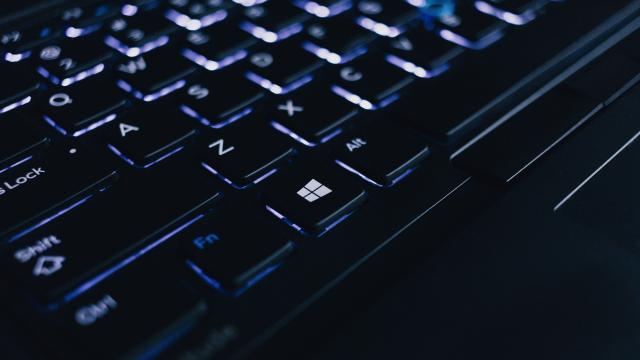I’m not going to ask why you need a keylogger. Just know that installing one on someone else’s system is a great way to get yourself dumped, fired, or prosecuted, depending on your situation. It’s also a great way to really put someone in a world of hurt, should the little utility you’ve downloaded capture keystrokes for you and send them to another source without you or your target’s knowledge.
It’s Evil Week at Lifehacker, which means we’re looking into less-than-seemly methods for getting shit done. We like to think we’re shedding light on these tactics as a way to help you do the opposite, but if you are, in fact, evil, you might find this week unironically helpful. That’s up to you.
In other words, slapping a keylogger on a person’s system is a pretty crummy move. I’m going to assume you’re installing this on your system to make sure nobody is breaking in and using it at your home or office. Right?
You can find a bunch of keyloggers for Windows around the web—hardware keyloggers, too. That’s the easy part. The ones I’m featuring in this article have two advantages over the others I’ve checked out: They didn’t trigger Windows Defender when you downloaded or installed them, suggesting that they’re neither a trojan horse nor something easily picked up by another user’s system, and they’re already compiled into an easy-to-use installation program. (If you want to go compile your a keylogger from source code or fiddle with Python to get it running, by all means.)
I’ve tested all three of the following keyloggers, and here’s how I’d rank them in order of least to most preferred:
Spyrix Free Keylogger
This app had the least-pleasing UI of all the ones I checked out, and all of its fancy hiding features require you to pay at least $US60 ($85) for a 12-month licence of the professional software (bleh), but it’s a basic keylogger that gets the job done.
Though the app’s icon sits in your Windows task bar—which you can manually remove via Windows’ task bar settings—it otherwise hides itself fairly well, requiring you to hit a key command (defaulting to CTRL + ALT + A) to pull up it’s main screen. There, you’ll get a fairly comprehensive listing of all the major things that happened on a given system, including what programs launched (and when), and what was inputted into them:
The app also supports a bunch of extras, including screenshots, webcam snapshots, and items copied to the clipboard. Frankly, I feel it’s a bit much, especially since that simple text log is going to get mighty crazy after a week or so of use. You can also seemingly email log files to yourself via Spyrix, but I don’t exactly trust the company to play nice with the data it sends your way. Call me paranoid.
That all said, I didn’t have any issues installing or using Spyrix, and it certainly gets the job done—sort of. When I started typing in a dummy text file, Spyrix had a little trouble registering my initial keystrokes. That probably isn’t a big deal if you have a sea of inputs to wade through, but it was a little less accurate in my (admittedly limited) test.
Revealer Keylogger
The free version of Revealer Keylogger offers a pretty no-fuss way to record that which is typed into a system. Like Spyrix, the app’s icon lives in your task bar for anyone to see if you don’t remove it manually. That said, its primary screen (and settings) also hides behind a keyboard combination—CTRL+ALT+F9, by default.
Revealer Keylogger can also shoot screenshots while it’s running, but I think its text-recording capabilities are all you really need. They’re well-presented and accurate. You can easily see when a person typed into an application, what application it was, and when they made their inputs. If you’re brave, you can even have Revealer Keylogger email this information out to you. I wouldn’t go for that option myself, but I would check out the app’s “Stealth” features in its Settings menu—allowing you to conceal Revealer Keylogger from the Task Manager, within Windows Explorer (or File Manager), and when Windows starts.
StupidKeylogger
What I like most about StupidKeylogger is that it’s virtually impossible for anyone else to find. There’s nothing that sits in your startup menu; no application to remove in “Programs and Features, “ and no icons in your task bar to give away the fact that it exists. You’ll need physical access to a system to reap the rewards of what it records, as well as to install it, but that shouldn’t be too tricky, right?
I didn’t take any screenshots of StupidKeylogger because there’s not much to show. You unzip the keylogger’s contents into a system (or flash drive), run the “Infect.bat” app to install it, and go away. When you’re ready to see what it’s done, you return to the system, run “CollectData.bat” to create a log file, and run “RecordDecoder.exe” to decrypt it. Boom—a giant text file of keystrokes and mouse clicks awaits.

Comments